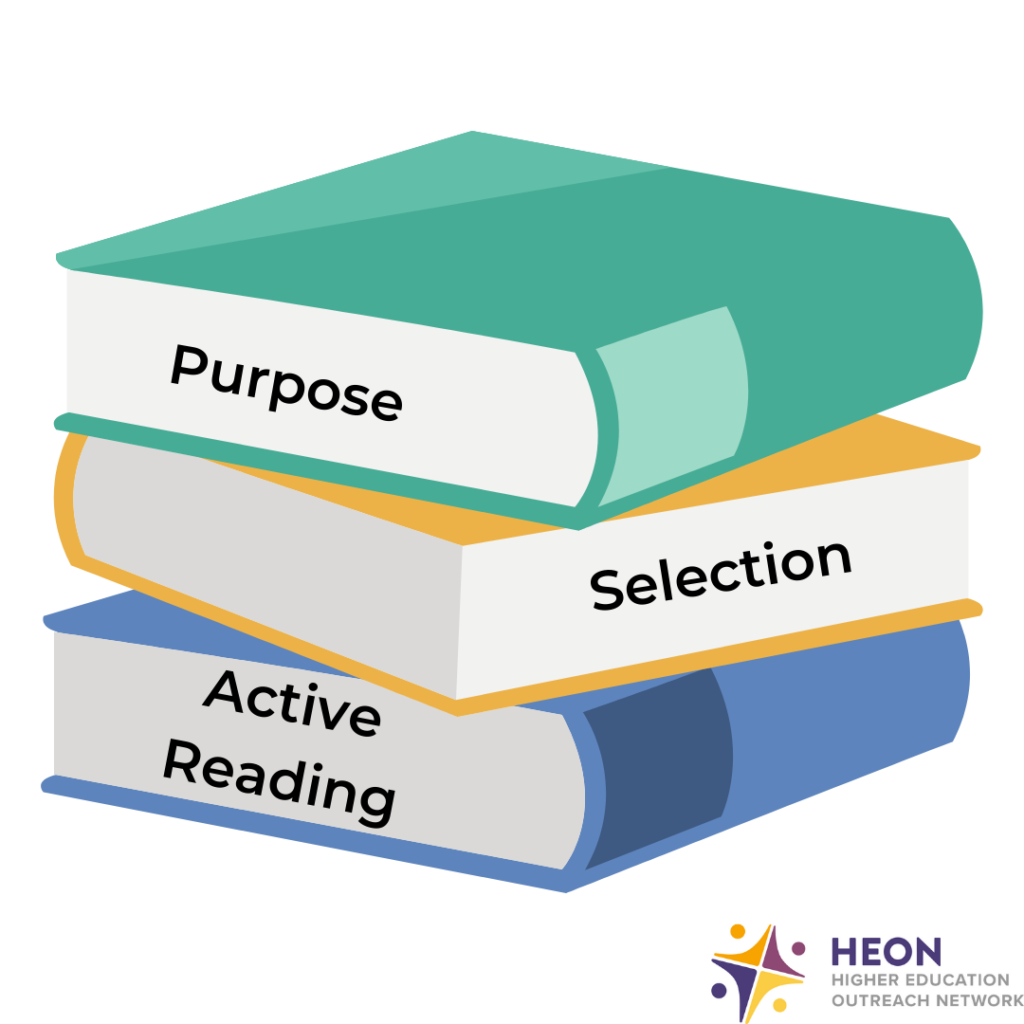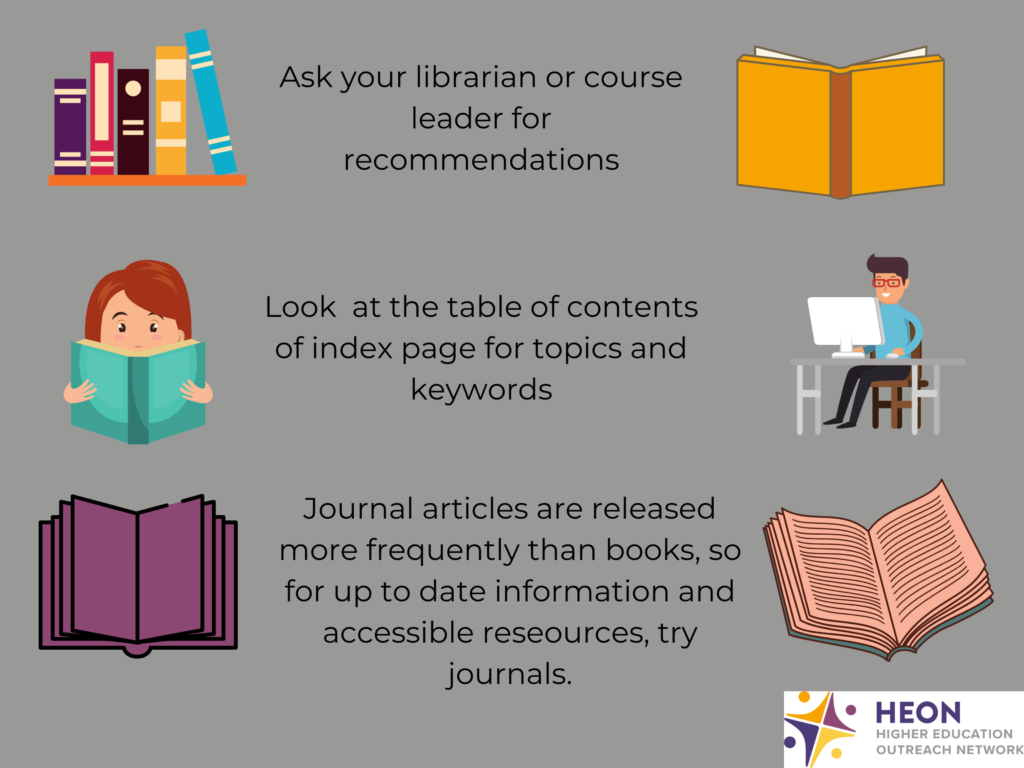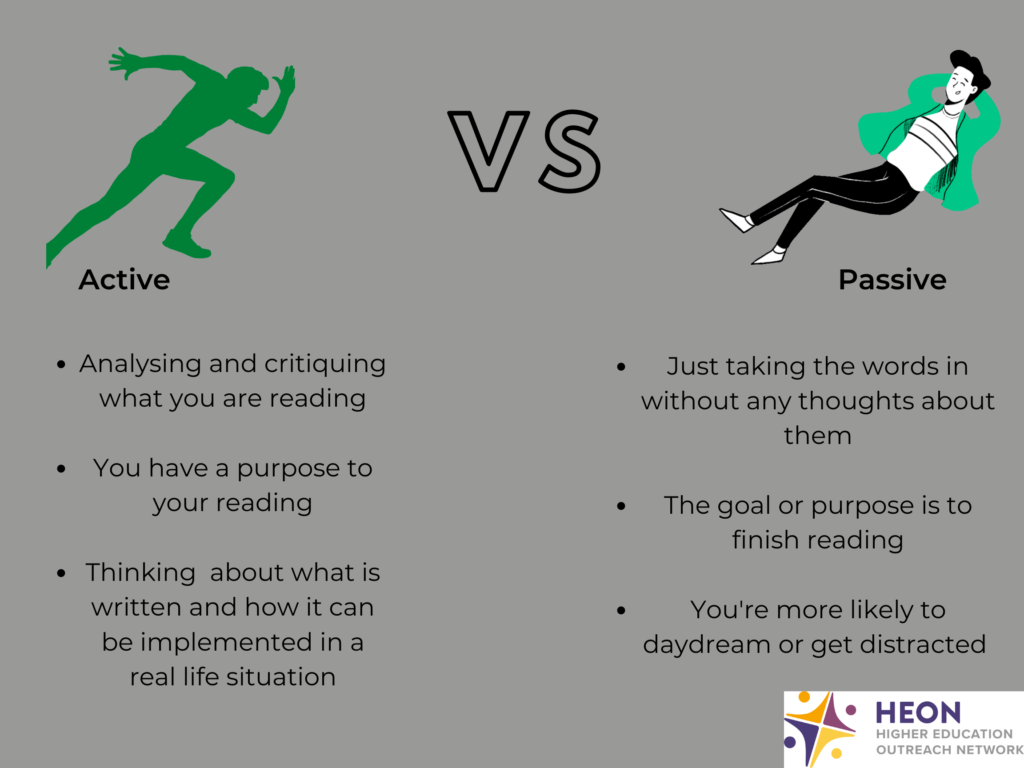How to... Read Effectively
You may be thinking as you clicked on this topic that this is a really strange thing to create a skills series on. Reading for leisure and reading for academia are two very different things and will require different approaches.
Have you read a book or magazine and realised that you’ve got to the end of the page without really taking anything in? It happens to all of us so it’s incredibly normal, but when you’ve got assignments you can’t afford to be distracted or waste any time.
When you’re reading for an assignment, there are three steps to take into account:

Purpose
What is your purpose for reading this particular article or book?
- To do some background reading?
- To find supporting evidence to back up your argument?
- To develop your understanding of a theory or topic?
Once you know your purpose, it will be easier to know what you’re looking for when choosing a book or article to read and when reading it.
Selection
Once you’ve worked out what your purpose is, you need to select your materials. It’s really important that you choose your reading material carefully. A lot of students will say that they’ve wasted a lot of time flicking and reading through books and articles which had nothing to do with your purpose.

Active reading
The last step in reading effectively is making sure you’re actively reading as opposed to passively. If you complete the first two steps outlined above, it’ll be easier to read actively.

Now you’ve covered the basics of how to read effectively, check out the next activity where we’ll discuss how to take effective notes.